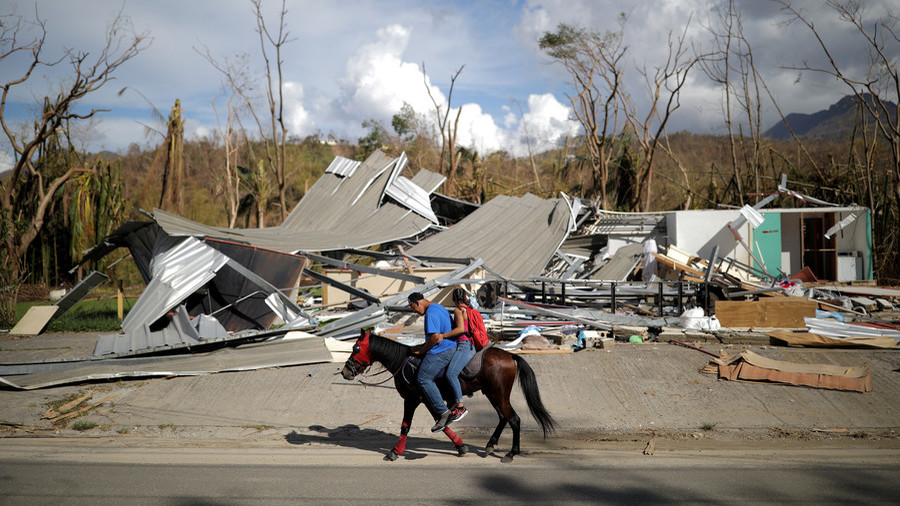Puerto
Rico raises death toll of Hurricane Maria to 2,975 from initial 64

Almost
3,000 people died in the wake of Hurricane Maria, which battered
Puerto Rico last September, the US territory announced after a new
study.
Governor
Ricardo Rosselló made the official announcement on Tuesday,
following the publication of an independent study estimating the
casualties at 2,975.
Commissioned
by Governor Rosselló and carried out by the Milken Institute School
of Public Health at George Washington University, the study found
that the death toll was considerably higher than original reports.
In
estimating the true death toll of Hurricane Maria, researchers looked
at historical data to estimate how many people would have died had
the storm not hit the island. That figure was then compared to the
number of deaths reported from September 2017, when the hurricane
hit, to February 2018, when the island still struggled with blackouts
and a shortages of essential supplies on the road to recovery.
The
study found that all age and income groups were affected by the sharp
rise in mortality, but that the risk of death was markedly higher
among the island’s poor. Among low-income Puerto Ricans, the risk
of death was 45 percent higher.
An
earlier survey, carried out by the government of the US territory and
presented to Congress earlier this month, put the death toll at 1,427
above normal, but concluded that it cannot say for sure how many of
those actually died as a result of the storm. The report did
highlight the damage to Puerto Rico’s infrastructure and public
health, and was accompanied by a request for $139 billion in aid.
The
authorities' initial figure of 64 deaths was doubted by much of the
media at the time, but was defended by Rosselló, until now. That
figure was likely as low due to officials strictly classifying only
certain deaths - such as those caused by collapsing buildings, flying
debris, floods and drownings - as caused by the hurricane.
“During
our broader study, we found that many physicians were not oriented in
the appropriate certification protocol," the report explains.
"This translated into an inadequate indicator for monitoring
mortality in the hurricane's aftermath."
A
Harvard University study, published in May, estimated that there were
4,645 more deaths in Puerto Rico due to the storm. It garnered
widespread media attention.
If
the new figures are accurate, Hurricane Maria is the deadliest storm
to have hit Puerto Rico since the 1899 San Ciriaco hurricane. It
began as a tropical storm off the west coast of Africa, intensifying
as it approached the Caribbean. It made landfall on Puerto Rico on
September 20, battering the island with winds of up to 155 miles per
hour, ripping buildings apart and uprooting trees.
The
Trump administration was blasted for its response to the devastation,
which was marked by delays in water and food deliveries. Carmen Yulín
Cruz, the Democrat mayor of San Juan, got into a verbal spat with
President Trump over his response to the crisis, which she said
deserved “a 10 out of a scale of 100.”
The Mayor of San Juan, who was very complimentary only a few days ago, has now been told by the Democrats that you must be nasty to Trump.
Last
year’s Atlantic hurricane season was a particularly active one.
Puerto Rico was hit by storms Maria, Irma and Philippe, and was
narrowly missed by hurricane Jose. With some of the island still
without power, Puerto Rico now faces into a less threatening
hurricane season this year.



No comments:
Post a Comment
Note: only a member of this blog may post a comment.